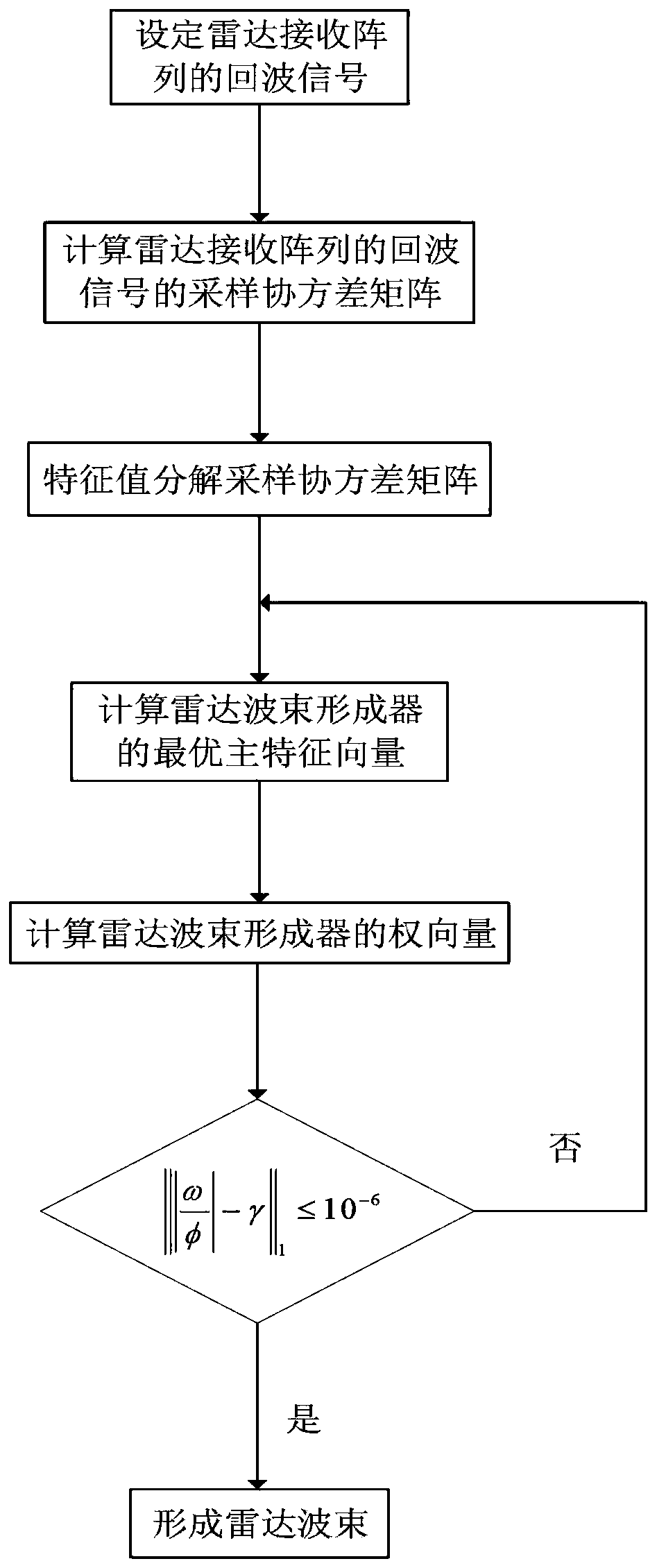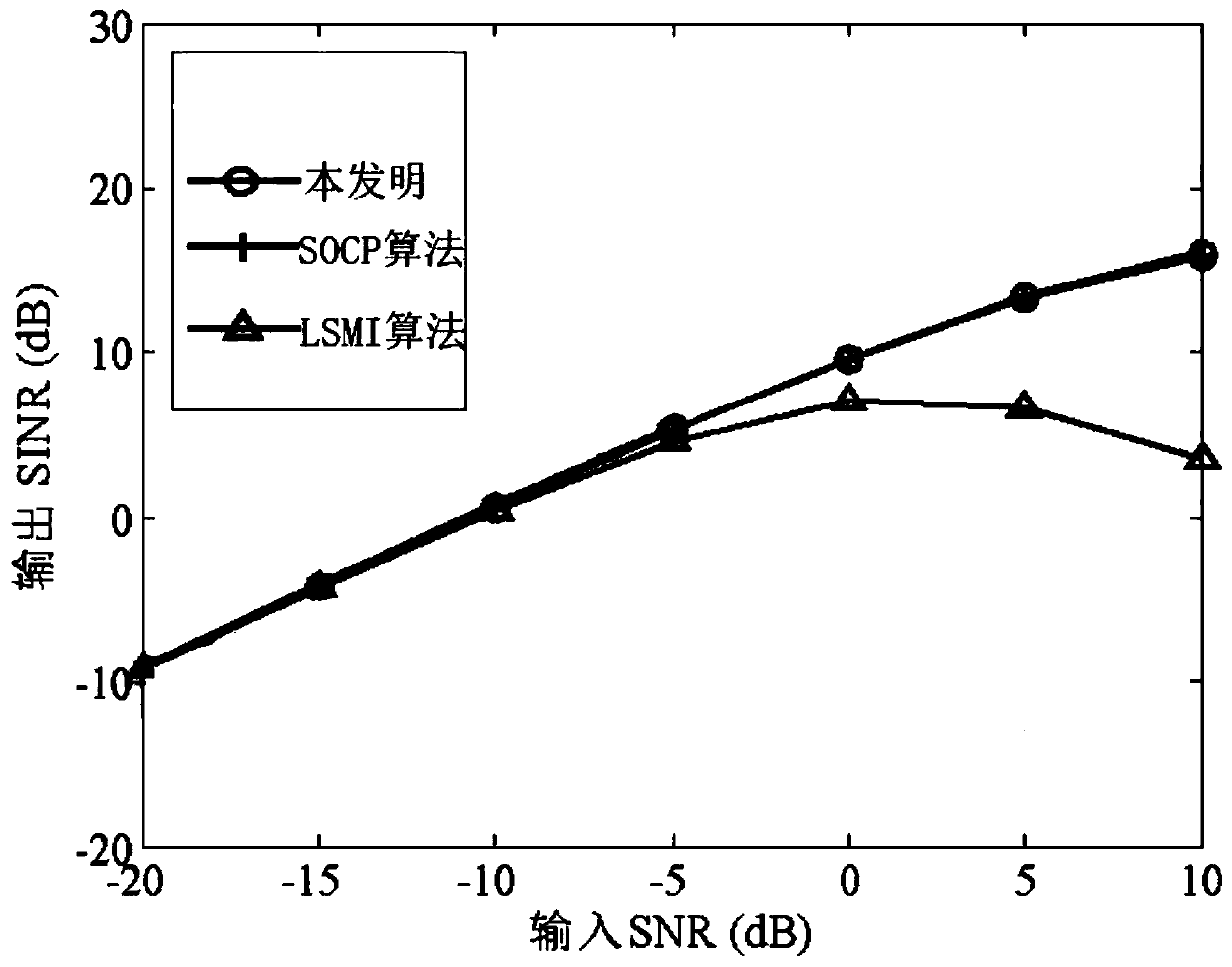Radar beam forming method based on power iteration generalized Rayleigh quotient algorithm
A radar beam and iterative technology, which is applied in the field of communication and radar beamforming, can solve the problems of inability to form real-time radar beams, large amount of calculation for solving the sample covariance matrix, and inability to effectively suppress radar beam interference and noise, etc., so as to facilitate rapid implementation , reduce computational complexity, and suppress interference and noise
- Summary
- Abstract
- Description
- Claims
- Application Information
AI Technical Summary
Problems solved by technology
Method used
Image
Examples
Embodiment Construction
[0028] The present invention will be further described below in conjunction with the accompanying drawings.
[0029] refer to figure 1 , to further describe the specific implementation steps of the present invention.
[0030] Step 1. Set the echo signal of the radar receiving array including the steering vector.
[0031] The expression of the echo signal of the radar receiving array including the steering vector is set as follows:
[0032]
[0033] Among them, x represents the echo signal received by the radar receiving array, β(θ 0 ) means that the radar detects θ 0 The amplitude of the echo signal reflected back to the radar receiving array by the ground object in azimuth, a(θ 0 ) means that the radar detects θ 0 The steering vector of the echo signal reflected by the ground objects at the azimuth angle to the radar receiving array, P represents the total number of interference signals received by the radar receiving array from different azimuth angles, ∑ represents ...
PUM
 Login to View More
Login to View More Abstract
Description
Claims
Application Information
 Login to View More
Login to View More - R&D
- Intellectual Property
- Life Sciences
- Materials
- Tech Scout
- Unparalleled Data Quality
- Higher Quality Content
- 60% Fewer Hallucinations
Browse by: Latest US Patents, China's latest patents, Technical Efficacy Thesaurus, Application Domain, Technology Topic, Popular Technical Reports.
© 2025 PatSnap. All rights reserved.Legal|Privacy policy|Modern Slavery Act Transparency Statement|Sitemap|About US| Contact US: help@patsnap.com



